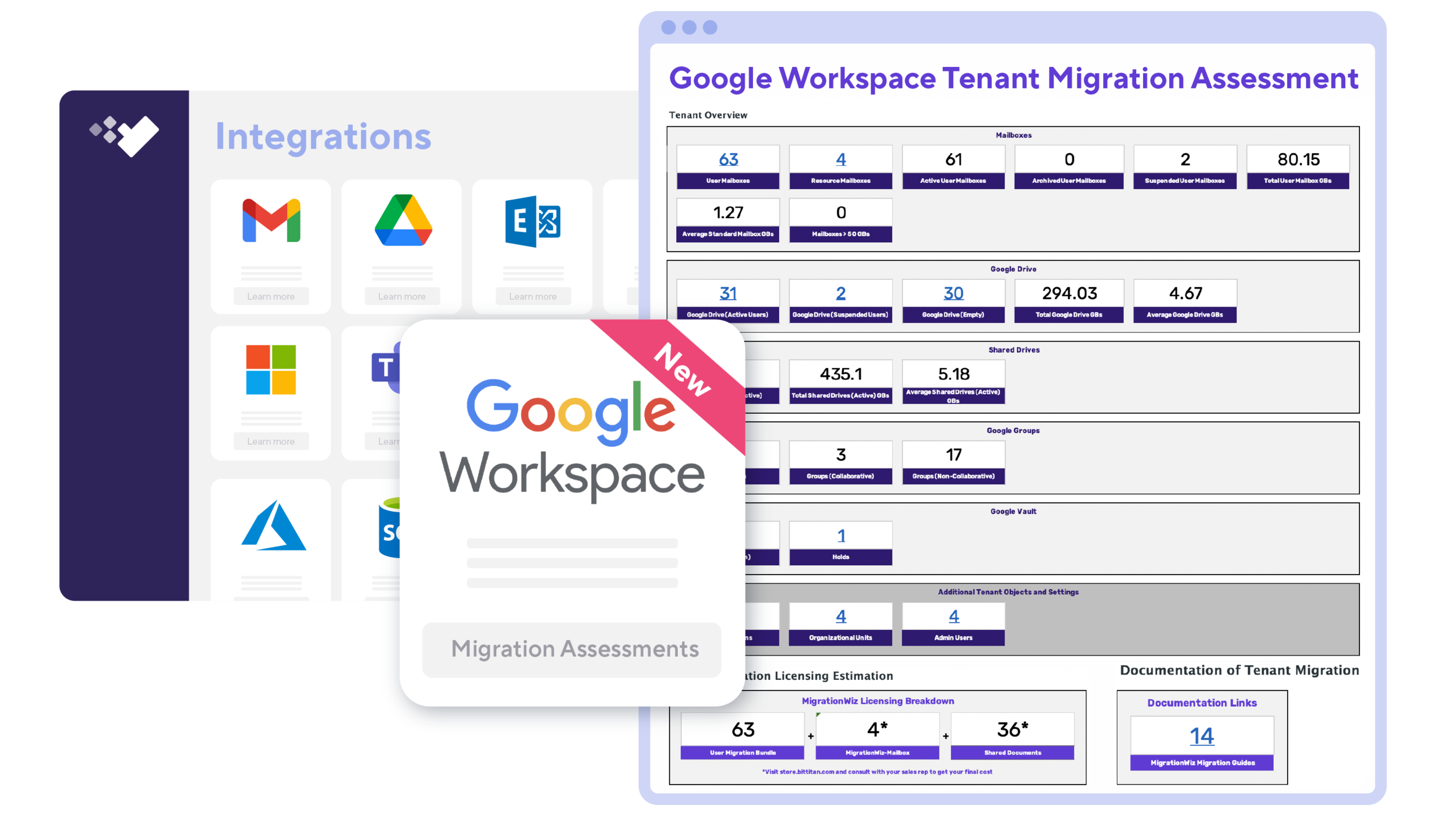How Sales Teams Can Leverage IT Assessments
Get your foot in the door with IT assessments
Landing a call with a prospective customer is an essential first step to landing their business. But unless you already have an in with the company, you have to assume they’re comparing you to several other IT service providers. If you can’t tangibly distinguish the value your services bring from the other ITSPs and MSPs, you’ll be reduced to competing for new accounts solely on price – hacking away at your margins to make the sale and hoping you can make up for it once your foot is in the door.
To differentiate your services, you need to add real value – demonstrate your technical prowess in a way that’s highly tailored to the interests of your prospective customer. It’s even better if you can set yourself apart with a tool that requires minimal effort, doesn’t require a tech to tag along on every sales call, and clearly shows the value you add to cloud services.
What if you could offer prospective customers insights into their Microsoft 365, Teams and Azure environments that will support their IT planning? Automated assessments can do just that, while at the same time pinpointing ways for you to focus your service offerings.
Customize your IT services proposal
Imagine delivering a proposal to a prospective customer that’s fine-tuned to their specific needs. As you explain the value you will bring as their trusted IT partner, it isn’t just hypothetical. You've given them a unique glimpse inside their environment. Your discussion – and recommendations – can be highly focused and specific because it’s backed by real data and reporting that can be shared with the customer. Using assessments as part of the sales process could be the differentiator you’ve been looking for.
Since we’re talking about assessing their environment before an agreement is signed, it’s important to have a non-invasive, secure approach that gives the customer peace of mind.
“If you’re asking to see inside a prospective customer’s environment, they’ll have questions about security – as they should,” said Willie Cash, General Manager for Voleer Americas. “Voleer assessments allow you to get the data you need for your analysis without any intrusion on their system.”
Offering non-invasive, secure assessments during your pitch
Running an assessment with Voleer leverages Microsoft’s device code technology, allowing you to perform the assessment remotely. There’s no need for the prospective customer to hand over login credentials, or agree to have a piece of software installed in their environment. Here’s what that exchange looks like:
When you’re having your qualification and discovery conversation via Teams session with your prospective customer, open Voleer and select the assessment from the library
Provide your customer with the link to a secure Microsoft portal and a single-use device code
After the customer clicks the link and inputs the code, they will log into the Microsoft device code portal using their admin credentials
This enables Voleer to securely to connect with their system and pull through only the key data points that you need for the Voleer analysis
You can choose one or several automated assessments that quickly provide tangible insights
The customer has full control and can discontinue access at any time so they always feel secure and in control
Voleer assessments are presented in clear, easy-to-read layouts, but here’s where you really shine. Your ability to understand and interpret what you’re seeing will open customers’ eyes to the many ways you can help them enhance security, boost efficiency, reduce costs, and get the most out of their systems.
Here are some of the insights you’ll be able to share and discuss:
Hidden gaps in security that could lead to serious vulnerabilities
Teams sprawl resulting in unused and under-used teams, empty channels, and scattered data
Unused licenses that are unnecessarily inflating the customer’s IT budgets
Places where added governance can increase control in their environment
Evidence that employees may need help getting more out of their tools and applications
Compliance issues that should be addressed before they’re flagged by an auditor or regulator
Gain the competitive edge with Voleer
When you’re pitching your services to a prospective customer, you should assume they’re talking to a few of your competitors as well. You need to give them a reason to choose you – preferably a reason that’s highly relevant to their business. Using a Voleer assessment during a sales meeting will have them focused on what you have to offer – because it’s all about them. You won’t be talking through a menu of generic services. Instead, you’ll be able to identify immediate ways to make a difference in their environment.
Since one Voleer subscription gives you access to unlimited automations and assessments, you’re able to choose how to use them. Here are a few ideas:
Offer a free or low-priced assessment as part of your lead-generation advertising
Offer a free assessment when you’re starting a conversation with a prospective customer
Design an introductory service package with built-in cloud-centric assessments
Follow up on a sales conversation and offer to run a different relevant assessment based on what you learned in your initial discovery
In his conversations with MSPs, Willie reminds them of the value of investing a little to get a lot: “The cost of a Voleer subscription that includes unlimited automations and assessments is an investment in that unlocks the potential for long-term managed services contracts or high-value consulting around a customer’s Microsoft Cloud stack.”











